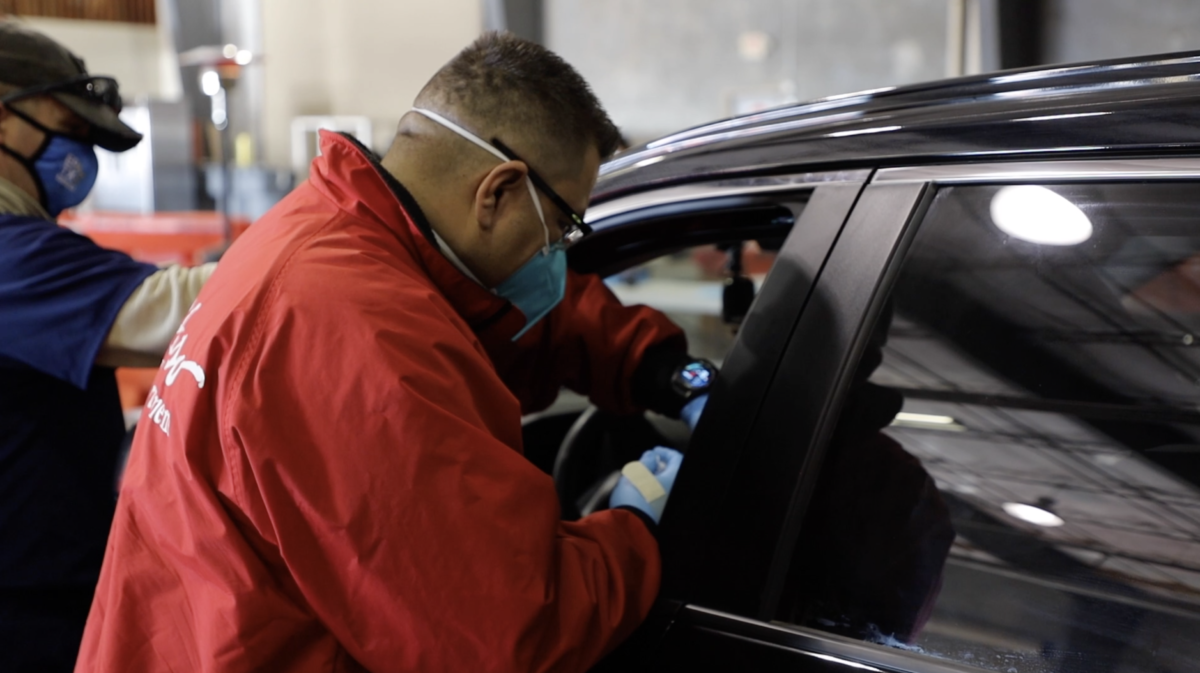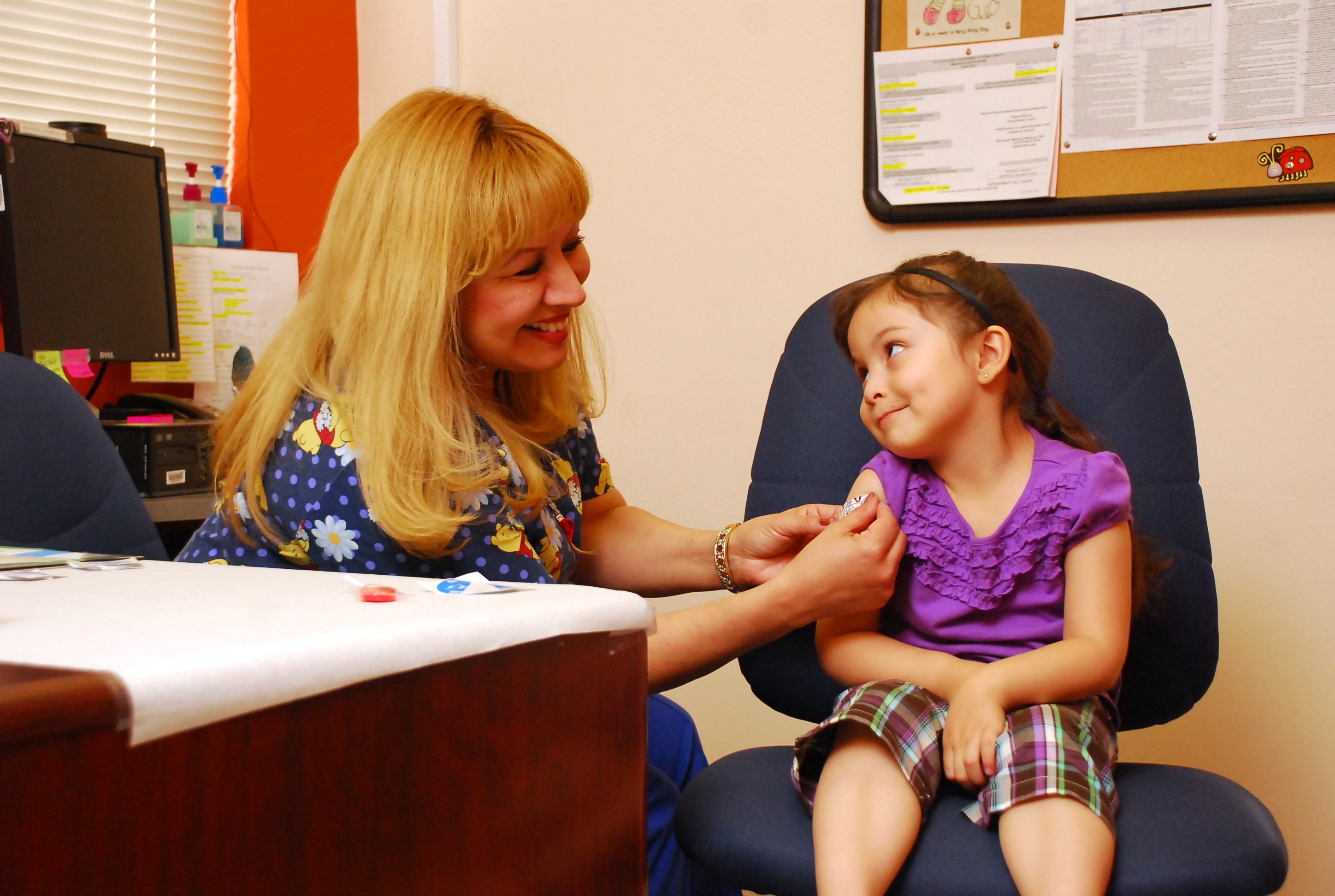Editors’ Note: The National Civic League has previously documented the resilience communities have shown throughout the COVID pandemic. As the world marks the three-year anniversary of the pandemic’s start, COVID continues to pose a threat in the United States, particularly for people at increased risk of severe illness, hospitalization, and death—namely, people over 50 and people of all ages with underlying medical conditions, such as moderate-to-severe asthma, diabetes, and obesity.
The good news is that we know how to protect ourselves and our communities against the worst outcomes of COVID. The National Civic League is proud to partner with the U.S. Department of Health and Human Services’ We Can Do This campaign to educate the public about the continued threat of COVID and the importance of staying up to date with one’s COVID vaccine.
Updated (bivalent) COVID vaccines provide protection against the original virus that causes COVID and the Omicron variant, which is currently causing all new COVID infections in the United States. People 18 and older should get an updated COVID vaccine now if they’ve never been vaccinated or if their last COVID vaccine dose was before September 2022. People 65 and older can now get a second updated COVID vaccine beginning 4 months after their first. People with compromised immune systems can now get a second updated COVID vaccine beginning 2 months after their first. Parents and guardians of children under 18 should talk to their child’s vaccine or health care provider about when they need their updated vaccine.
However, many cities and counties continue to face challenges with reducing vaccine hesitancy and increasing COVID vaccine uptake. In the case study below, we spotlight how El Paso, Texas, is reaching at-risk populations and reducing vaccine hesitancy and barriers to vaccine access. With a truly multi-sectoral effort, El Paso was among the first communities in the nation to immunize (completion of primary vaccination series) at least 75 percent of its eligible population. Its vaccination rate is among the best of any large metropolitan area in the country.
To find vaccines near you, go to vaccines.gov.
By Hector I. Ocaranza, M.D., MPH
Like many communities across the nation, COVID initially overwhelmed El Paso, Texas, where I serve as the city-county health authority. We required alternate care sites to treat the influx of people requiring hospitalization and mobile morgue units to store the many who died.
With the arrival of the first COVID vaccines in late 2021, vaccination has been our primary public health strategy in El Paso for protecting the community from COVID. Like many other communities, we’ve faced significant challenges to getting these lifesaving shots in arms, including barriers to access and the need to educate people about the importance of vaccination and to combat misinformation.
By addressing the aforementioned challenges head-on, El Paso was among the first communities in the nation to immunize at least 75 percent of our eligible population against COVID. Because of our high vaccination rate, we now have very low hospitalization rates and deaths. We couldn’t have achieved that without cross-agency and cross-sector collaboration.
Initial Pandemic Response Paved the Way to Success
Our success in El Paso is partly attributable to quickly realizing that a traditional public health emergency response, which involves the Department of Public Health (DPH) simply making its employees and resources available to the community, was not going to be suitable for the COVID pandemic. Our response needed to be dynamic, collaborative, and asset based.
Early in the pandemic, DPH conducted a needs assessment, where we identified opportunities and barriers to addressing disparities and inequalities, as well as lessons learned to apply from similar public health emergencies, such as the 2009 H1N1 influenza pandemic. Importantly, we found innovative ways to collaborate between traditional and nontraditional stakeholders.
A key collaboration was between our local fire and public health departments, whose expertise in responding to emergencies proved to be advantageous. One product of this collaboration was the creation of an education task force, which developed COVID informational sessions to present upon request to community groups. Through its outreach activities, the task force directly reached close to 67,000 people—and countless more as those people shared what they learned with others in their community.
 Collaborations between the city and county of El Paso led to the formation early in the pandemic of the El Paso United COVID-19 Transition Task Force, a panel of local experts (including myself) who provided the city and county with recommendations for data tracking and display, infection control, and the prioritization of at-risk populations for vaccination and treatment.
Collaborations between the city and county of El Paso led to the formation early in the pandemic of the El Paso United COVID-19 Transition Task Force, a panel of local experts (including myself) who provided the city and county with recommendations for data tracking and display, infection control, and the prioritization of at-risk populations for vaccination and treatment.
Paso del Norte Health Foundation partnered with institutions of higher education and other nonprofits to launch Reduce the Risk, a campaign about COVID-19 health and safety, mental health and well-being, and financial and social services. The campaign provided information through a website, other promotional materials, and engagement with community health workers.
Overcoming Barriers to Vaccine Access
Our biggest vaccination barriers in El Paso were accessibility and equitable distribution of the available vaccine supply. We used federal funds from the Coronavirus Aid, Relief, and Economic Security (CARES) Act of 2020 to pay for response personnel, to buy real estate, to remodel vaccination clinics, and produce and market educational materials.
El Paso opened two centrally located mass vaccination sites. To streamline the vaccination process, the city, county, private health care organizations, and volunteers worked together to set up and run these well-structured, high-capacity vaccination sites. Technology was essential to tracking data and making vaccination more efficient through an appointment system.
The vaccine supply was initially scarce, so we set up an appointment system to have an organized and efficient process. Vaccines were also made available in priority groups to provide the greatest benefits to those at the highest risk. As vaccine supply increased, then priority groups were broadened.
In the initial phase of the vaccination campaign, teams of vaccinators from the El Paso Fire Department went to nursing homes and assisted-living facilities to vaccinate older adults and people with disabilities in the community. When vaccines became more widely available, they expanded to vaccinating people in adult day cares and other facilities that care for older adults.

With CARES Act funding, we also acquired and remodeled four additional vaccination sites. We strategically placed these sites in neighborhoods ranked high on a social vulnerability index. While the mass vaccination sites have since closed, these clinics remain open to the public, providing vaccination and testing at no cost or need for an appointment.
Educating the Community, in the Community
It was important to reach at-risk populations by going to the places where they live and are cared for.
Our community education campaign in El Paso engaged a wide variety of stakeholders from academia, health care, local government, businesses, and nonprofit organizations. These collaborations succeeded in bringing talent, expertise, and organizational assets to reach at-risk groups. Multidisciplinary teams were able to identify at-risk groups, set objectives, identify barriers, and collectively identify solutions.
Having a variety of messengers also proved essential. We tasked local elected officials, subject-matter experts, celebrities, and sports stars with delivering specific messages to the communities in which they have influence through press briefings, commercials, interviews, and one-on-one interactions. And we partnered with local news stations to deliver fact-based messaging.
We crafted messages in English, Spanish, and even Spanglish, using vocabulary appropriate for a 6th-grade level. We also made sure the messages were culturally appropriate, incorporating the vernacular of people from all over Latin America.
The messages we created targeted specific audiences, using a variety of media and means. For example, we relied on social media to reach young adults, school officials to reach families, and Spanish-speaking news outlets to reach older adults. We also used high-visibility billboards and direct text messages. And we conducted in-language earned media outreach.
Community health workers also played an important role. These trusted community members were trained and tasked with sharing important public health messages to the communities in which they have influence. They also made presentations to neighborhood associations with information about COVID and vaccination explained in simple terms. Sessions stressed the effectiveness and safety of the vaccines, in particular for those with risk factors for severe COVID complications and death.
Conclusion
With current COVID cases, hospitalizations, and deaths all on the decline, there’s a desire to put the crisis in the rearview mirror and begin tackling other pressing concerns. To do so, we must ensure our most vulnerable community members have the protection that vaccination provides. We’re doing that in El Paso. Your community can do it, too.
Hector I. Ocaranza, M.D., MPH, is the city-county health authority for El Paso, Texas



